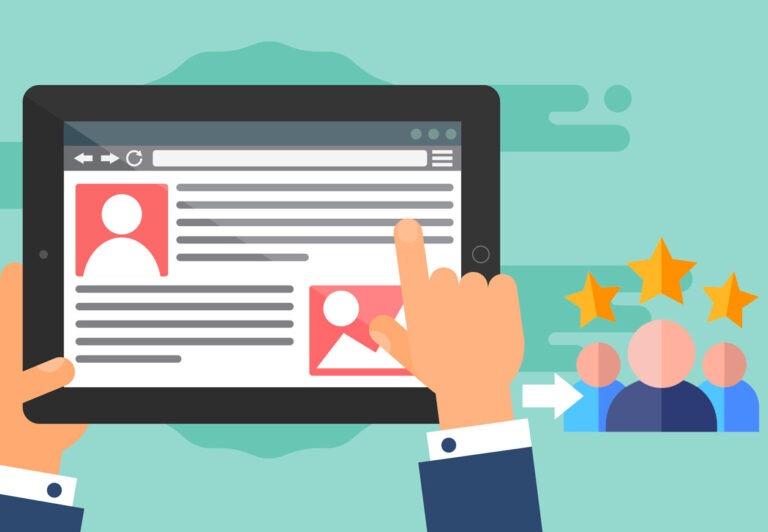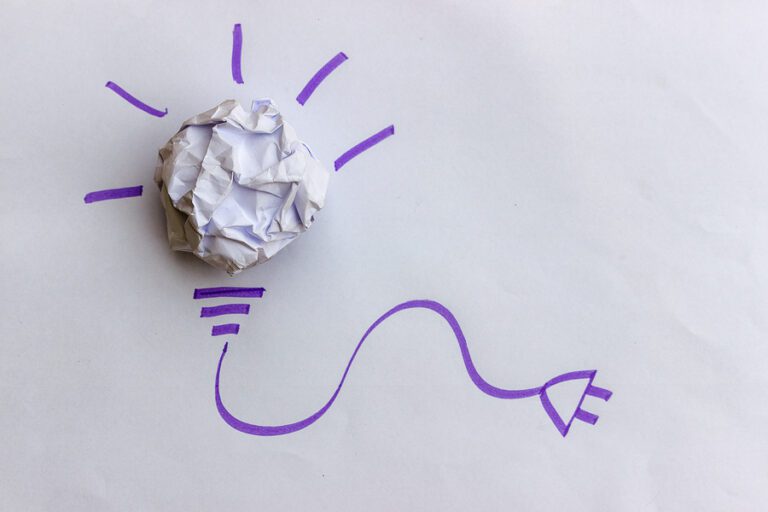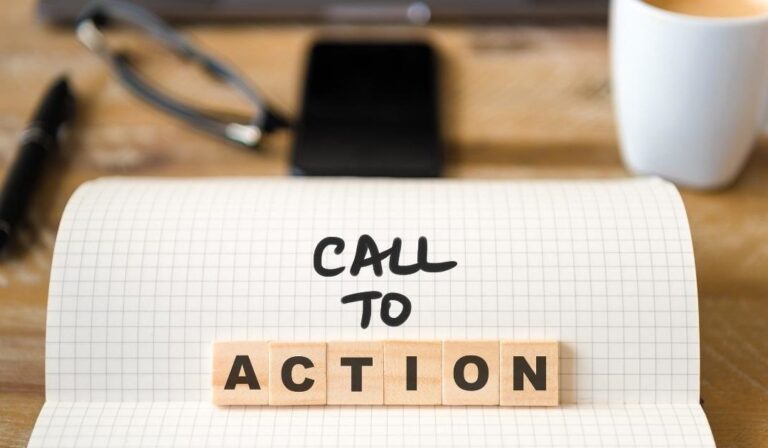Email Copywriting: 19 Proven Formulas to Use on Your Next Campaign

I hope you enjoy this blog post. If you want Hello Bar to grow your leads, click here.
Author:
Ryan Bettencourt
Published
July 31, 2024
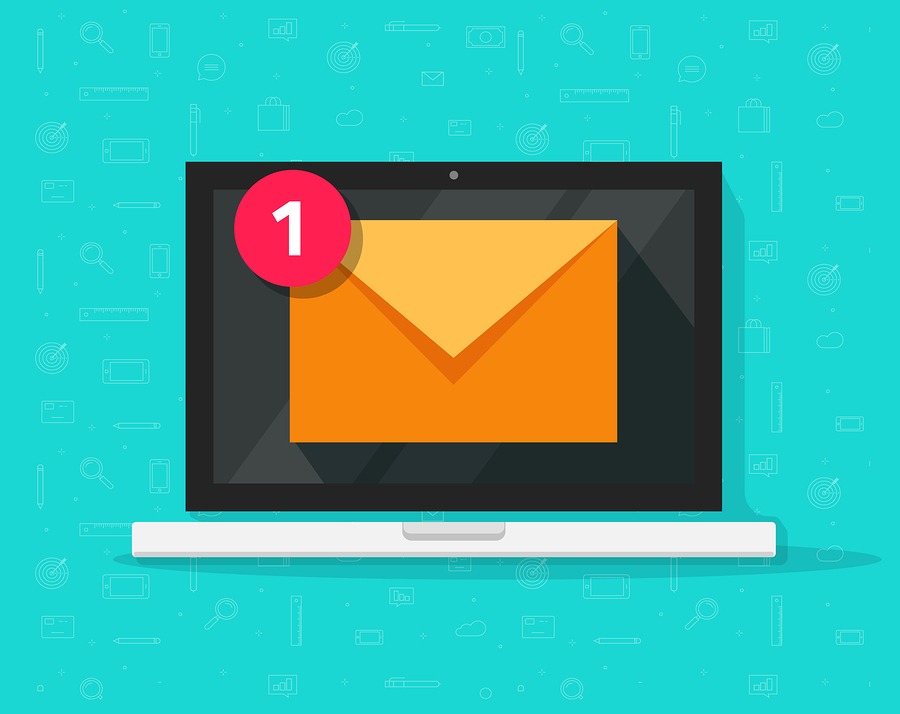
There’s a common misconception that email copywriting just requires a few catchy phrases and flashy graphics to be effective.
Wrong!
Truth is, powerful email copywriting recognizes pain points, sparks interest, and gently guides readers toward action.
But how will email marketing work if you’re a lousy copywriter? You need the right formulas to improve your copywriting skills.
We’ll discuss 19 proven email copywriting formulas you can use to refine your email marketing campaigns and capture your readers’ attention right from the subject line.
What Is Email Copywriting?
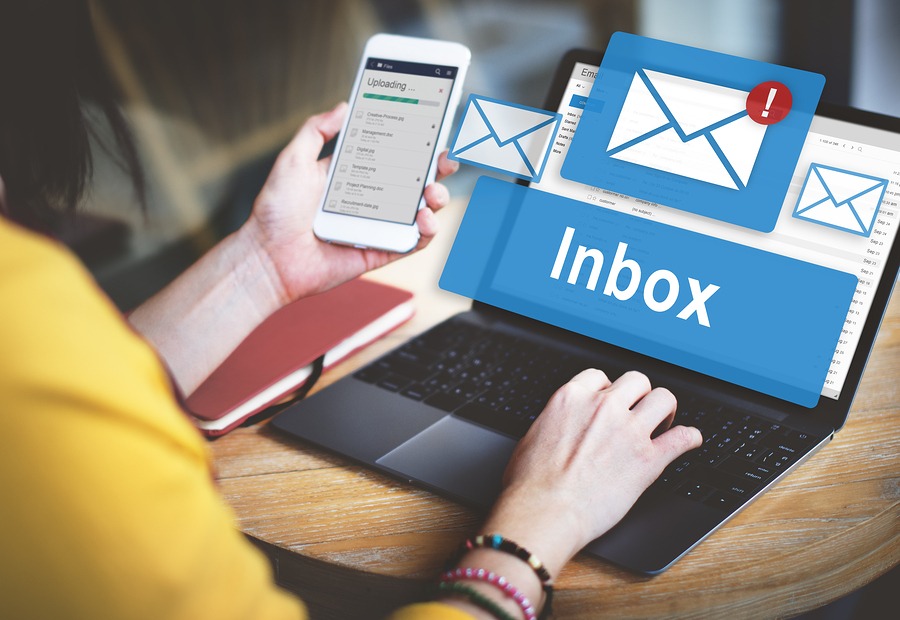
Email copywriting is the actual copy — the words — in your email subject lines and body content. It’s how you express an idea to convince prospective customers to convert.
In theory, it’s no different from any other form of copywriting. However, it has a few unique qualities that deserve serious consideration:
- Brevity
- High level of persuasiveness
- Emphasis on the connection between the subject line and CTA
- No fluff, filler, or tangents
The best email copywriting convinces the recipient to not only read the entire email but to engage with it. In most cases, that means clicking a link in the email — your CTA — and arriving at your desired page to convert on an offer.
How to Write Email Copy
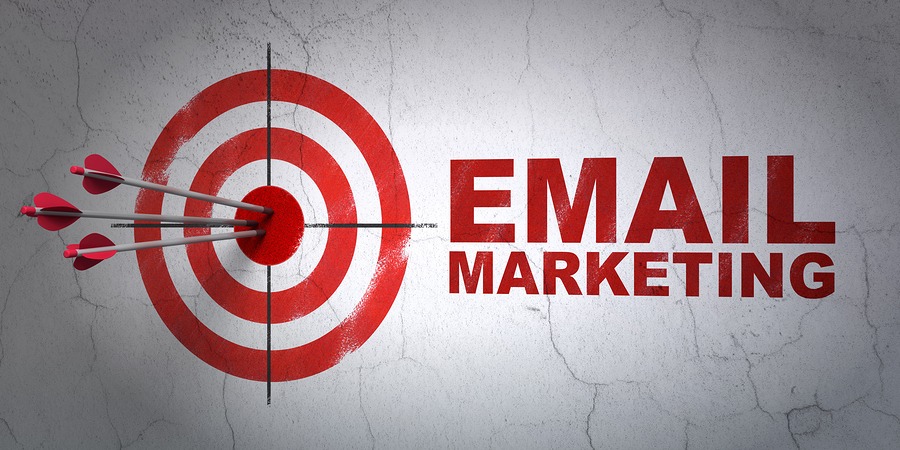
When you write email copy, you must start with a specific goal. What do you want your subscribers to do after opening and reading the email?
Maybe you’re promoting a flash sale, launching a product, driving traffic to your latest blog posts, or inspiring subscribers to submit user-generated content.
Whatever the case, every word in your email should drive subscribers toward fulfilling your goal.
For instance, if you want them to buy your newest product, focus on touting its benefits for the reader. What problem can it solve? How can it help them achieve their goals?
Most importantly, why should they act right now?
Don’t worry; we’re going to get into the nuts and bolts of this process in a minute. First, though, we need you to understand how powerful email marketing can be.
Interesting Facts You Need to Know About Email Marketing Copywriting
About 45.6% of emails globally were marked as spam in 2023. That’s a ton of communication.
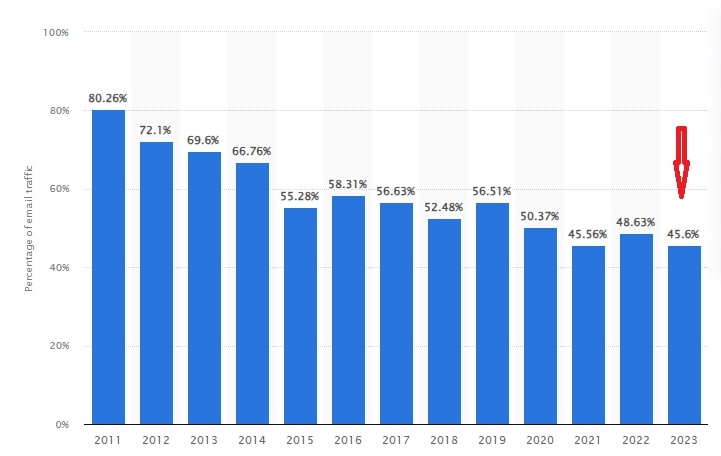
Image via Statista
You probably know that millions of those emails are meant for marketing purposes. If we glance at the Promotions category of our Gmail account, we will find several unsolicited from just the last 24 hours.
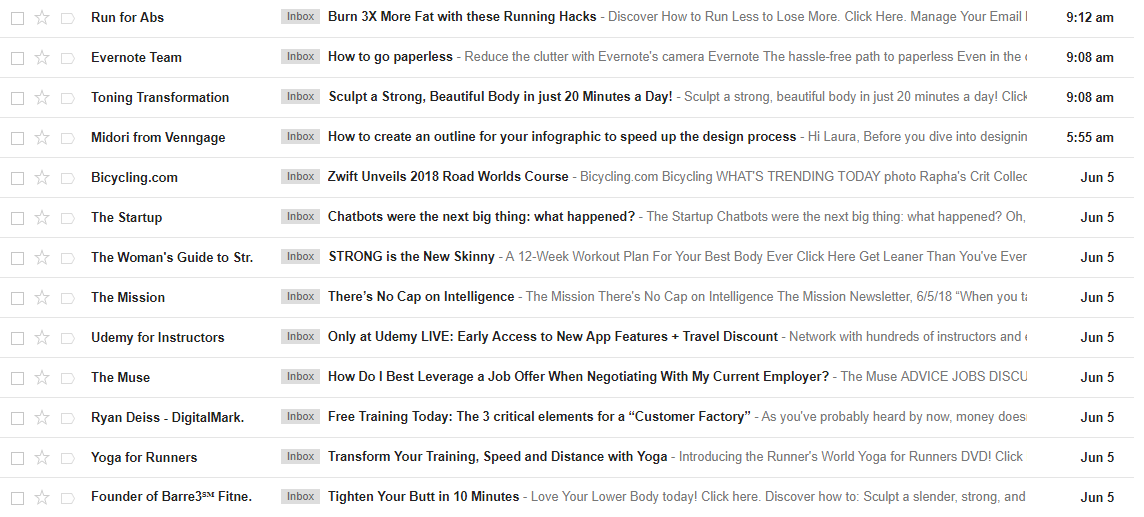
Nevertheless, email marketing works. In most cases, its success depends on email copywriting.
Think about it. When you open your Gmail account — or whatever email client you use — the first thing you see is a list of addresses and subject lines. Either you open the emails or you delete them.
You’ll open the email if a subject line offers sufficient intrigue to convince you to click. If the body copy grabs your attention, you’ll read. And if the CTA offers enough incentive, you’ll click.
That’s why you need to know email copywriting. Here are a few other good reasons.
Email Marketing is Highly Cost Efficient
About 52% of marketers reported a 2x ROI improvement from their marketing strategies. Around 5.7% reported an even higher 4x ROI improvement.
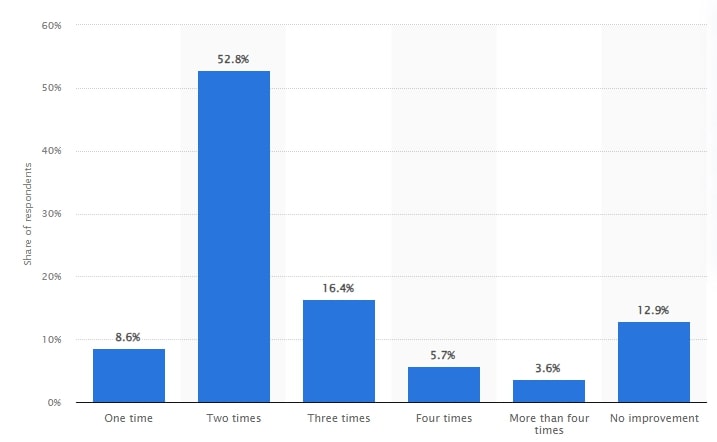
Image via Statista
To get the most bang for your marketing spend, start sharpening your email copywriting skills and use a solid email marketing strategy to boost conversions.
Writing a Great Subject Line is as Important as Great Email Body Copy
A poor subject line earns your email an unceremonial trip to the digital trash bin. People are simply too busy and overstimulated to waste time on something that doesn’t interest them.
However, you can’t just write an email subject line based on a formula. You need to know what stimulates your specific audience.
You Can Provide a Huge Amount of Value to Your Leads With Email Marketing
It’s true that email marketing benefits businesses, but only when it benefits consumers, as well. Instead of using your emails to sell to your subscribers, use them to give your subscribers something of value.
It could be information, inspiration, discounts, freebies, or anything else you can think of. When you finish writing an email, read it carefully. Will your subscribers be better off having read the email?
If not, start over.
Email Provides a Reliable Communication Medium Between You and Your Leads
Most consumers are used to reading email by now. It’s practically a reflex. However, that doesn’t mean you can rest on your laurels.
Focus on using email to communicate effectively with your subscribers. Think of it as a conversation you’re having with a good friend. Add nuance, emotion, and detail.
Think of it as an insider club. Only subscribers get to read what you share. That exclusivity can make your email copywriting even more effective.
Email Marketing Copywriting, if Done Right, Can Become the Lifeblood of Your Business
Some business owners view their subscriber list as their most valuable asset. It’s a way to enter the lives and homes of their target audience and convince them to convert.
When you’re a skilled email copywriter, you can profit from every email you send, whether you’re educating your audience or announcing a product launch. It’s all about building trust from the beginning and making good use of your subscribers’ time.
Pro Tip: After you write an email for your subscribers, let it sit for 24 hours. Then, go back and read it. You’ll come to the email with fresh eyes, allowing you to be more critical of your work.
Plus, you’ll be more likely to spot those insidious grammar and spelling mistakes that slip into even the best copywriters’ work. Even professional copywriters should always perform a grammar check on their work before sending it to a client.
Email Copywriting Best Practices
Your email copywriting will only engage your audience, drive conversions, and build lasting relationships when done right.
Here are some essential best practices to follow if you want your email marketing strategy to bear real fruits:
1. Avoid Spam Trigger Phrases
Even perfect email copywriting can end up in your recipient’s spam folder. Why?
Most email service providers (ESPs) use complex algorithms to filter out unwanted emails; certain words can trigger these filters.
These spam trigger words can make your email look like unwanted or malicious content, even if it’s not.
To avoid this, steer clear of phrases such as:
- Free (especially in subject lines)
- Limited time offer
- Winner
- Click here
- Congratulations
- Guaranteed
2. Optimize for Mobile Devices
A great email that isn’t responsive on mobile devices could be worse than a low-quality mobile-responsive email. This is especially detrimental since smartphone users worldwide are projected to increase by 1.5 billion to reach 6.4 billion users by 2029.
To connect with this audience, optimizing your email marketing copywriting for mobile is non-negotiable.
Here’s what you should do:
- Keep subject lines short (around 40 characters) to prevent truncation on mobile screens.
- Write brief, punchy paragraphs that are easy to read.
- Use bullet points and subheadings to break up the text.
- Use a font size of at least 14px for body text.
3. Avoid Using All Caps
The last thing you want is for readers to feel like you’re yelling at them.
While it may be tempting, using all caps in your email newsletter subject lines or body copy can be off-putting. It can also trigger spam filters and make your email look unprofessional.
Instead of caps, use bold or italic formatting to emphasize important points. You can also highlight key phrases with different colors.
4. Maintain a Consistent Tone
Imagine playfully chatting and laughing with a friend when suddenly they switch to a harsh, unfriendly tone. The abrupt change can confuse you, break your trust, and possibly drive you away.
Similarly, maintaining a consistent tone in communication helps build trust and improves audience engagement.
5. Proofread Your Emails
Errors in your emails can undermine your credibility and professionalism. So, thoroughly proofread your emails to ensure they are polished and free of mistakes. Taking a break before proofreading can help you approach the content with fresh eyes.
5 Email Copywriting Examples For Ideas
Learning to craft relevant and persuasive email content is excellent, but executing it is tricky. Seeing email copywriting in action can give you the headstart to run a successful email marketing campaign.
Here are five exemplary email campaigns from established brands that have nailed email copywriting.
1. Absolut – Personalized Email
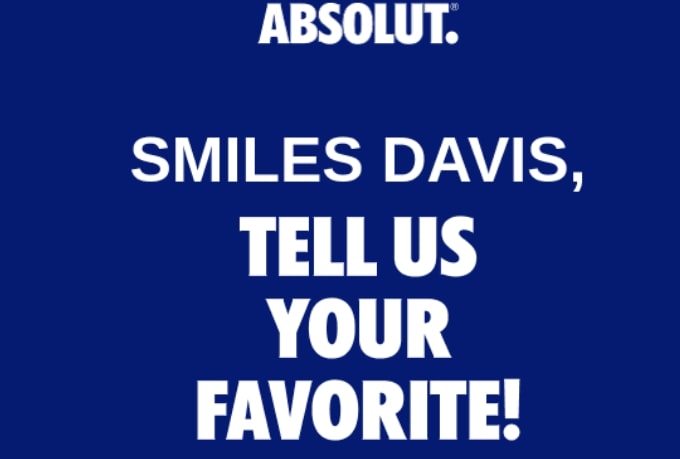
Image via Really Good Emails

Image via Really Good Emails
Absolut understands the power of personalization in email copywriting. They address the recipient by name, instantly creating a sense of connection.
They also ask about their favorite flavor to show they care about the recipient’s interests and preferences.
Absolut goes a mile further and requests feedback about their products. This demonstrates that they value their customer’s opinions and are committed to improving their offerings based on real customer experiences.
2. PayPal – Relatable
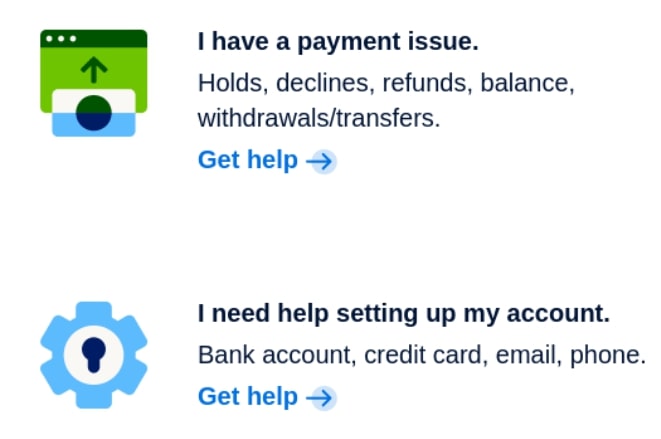
Image via Really Good Emails
PayPal uses relatable customer pain points in this email copy to grab the reader’s attention.
They pinpoint frequent problems that customers encounter when using the payment service. This includes difficulty accessing accounts, payment issues, setting up accounts, etc.
By mentioning these pain points, PayPal demonstrates that they understand their customers’ problems.
Each category has a prominent “Get Help” button that guides readers to the next step.
3. Spotify – Concise
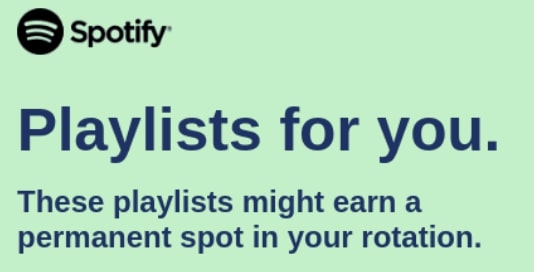
Image via Really Good Emails
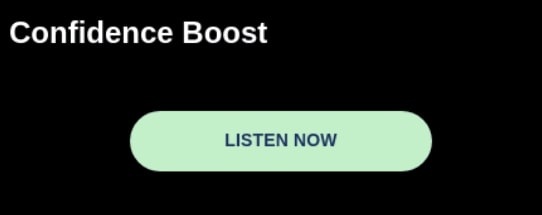
Image via Really Good Emails
Spotify uses clear and concise copywriting to recommend personalized playlists for its recipients.
The body of the email conveys the message in a few words and quickly guides readers to a clear call to action, “Listen Now.” The CTA button prompts readers to start listening to the recommended playlists.
4. OpenTable – Relevant
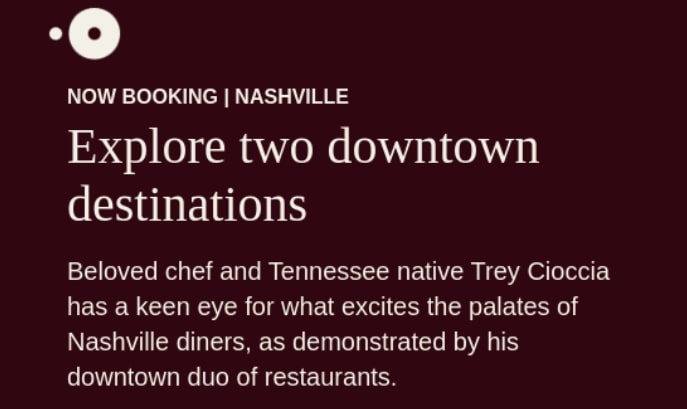
Image via Really Good Emails
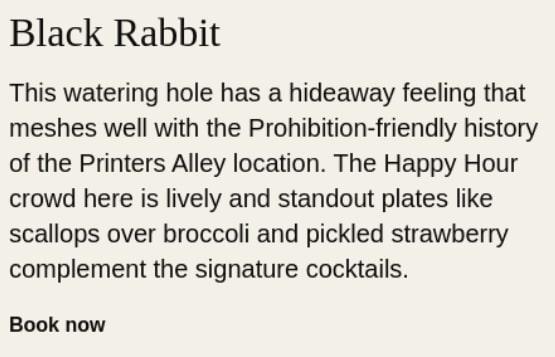
Image via Really Good Emails
OpenTable uses relevance in its email copywriting to appeal to the right audience segment. The email specifically mentions “Nashville” in the headline. This immediately grabs the attention of people actively looking for excellent restaurants in Nashville.
It also appeals to people who are interested in supporting local businesses or those who are curious about what local favorites might be.
The email copywriting also includes a clear call to action (CTA), “Book Now,” which clarifies intent and encourages interested readers to take the next step.
5. Peloton – Program Benefits
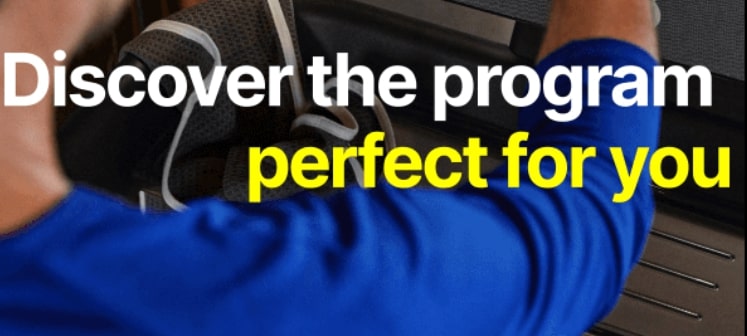
Image via Really Good Emails
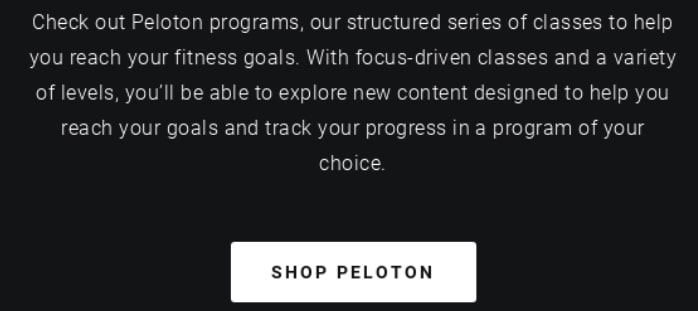
Image via Really Good Emails
Peloton uses program benefits in their email copywriting to encourage engagement and conversions.
The headline, “Discover the perfect program for you,” is particularly effective. Peloton implies that it tailors its programs to each user’s needs and fitness goals.
The copy then goes on to list some of the benefits of Peloton programs, such as:
- Structured series of classes
- Focus-driven classes
- A variety of levels
- New content designed to help you reach your goals
- Progress tracking
Benefits are a powerful motivator. It encourages people to engage with your products or services because they believe it will help them improve their lives.
19 Greatest Email Copywriting Tips That Will Make Your Conversions Grow
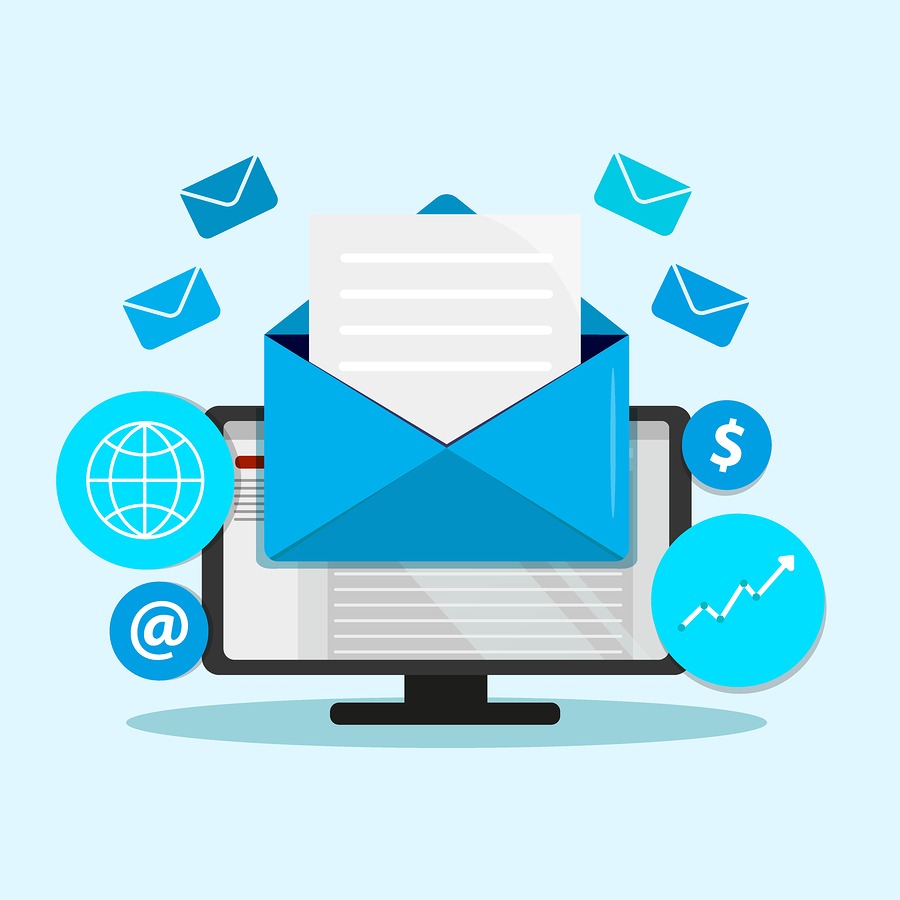
Email copywriting is directly linked to conversions. In other words, you don’t just want your subscribers to read your emails — though that’s a great first step. You want them to act on your emails.
That’s why you include a CTA in every email. The call to action tells your reader what to do next. But we’ll get into that more later.
Your emails need to represent your brand in the best possible light. Rephrase and revise each email until it says exactly what you want it to communicate — nothing more, nothing less.
Will every single subscriber open and convert on your email? No. That’s not the case for any business owner we know. However, following these email copywriting tips and tricks can increase your email conversion rates.
1. Be Relatable to Your Readers in all Your Email Marketing Copy
Nobody likes a marketing automaton. Show you understand how your subscribers feel.
Hitting pain points is a great way to do this.
For example, if you sell insurance products and write about life insurance policies for children, you have to show you understand your potential audience. What do they fear? What bothers them?
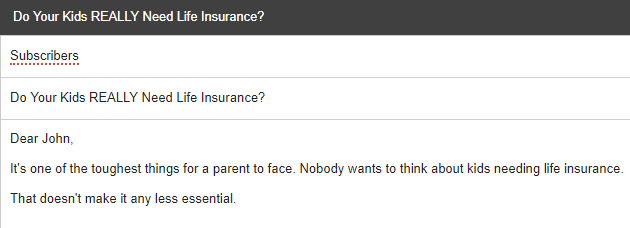
Demonstrate your empathy for your audience and hit the pain point. You can form a relationship with your subscribers by showing that you understand them and empathize with their plight.
2. Stress the Benefits of Your Product in Your Email Copy
Benefits over features. Repeat that five times before you start the email copywriting process.
Features are boring. They’re like the specs in a technical manual. Your eyes glaze over just thinking about them.
Benefits are marketing gold.
Help your customers understand how they will feel when they receive your product in the mail.
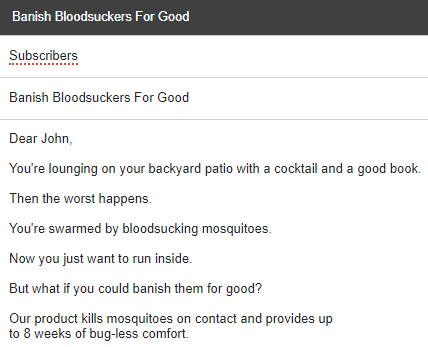
You can set the stage by hitting a pain point, then toss in a benefit or two to seal the deal.
3. Make Your Email Copywriting as Brief as Possible
Emails shouldn’t go on forever — especially in the beginning. Get to the point as quickly as possible, tack on your CTA, and hit SEND.
If possible, you don’t want your subscribers to have to scroll if they’re reading your email on a desktop or laptop computer. Make reading your emails effortless.
4. Keep Your Paragraphs Short – Include One Main Idea Per Paragraph
Similarly, you want each paragraph to be short and sweet. Check out the partial email above. Notice that only one paragraph exceeds a single line.
Short paragraphs — even those that contain just one sentence — keep the reader moving. It’s like creating a fast lane for your email copywriting.
5. Write Your Email Marketing Copy in the Second-Person Voice
The second-person point of view means talking to your subscribers as though they were right before you. Instead of saying he and she, you talk to the person directly.
Kind of how we are talking to you in this article.
Here’s a great example to buttress our point:
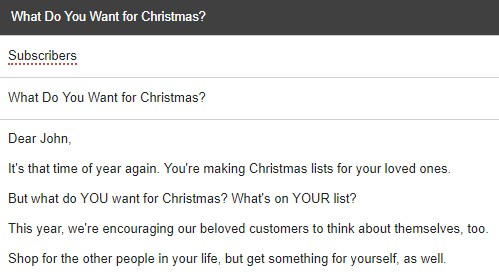
The email focuses on you. Not he or she.
6. Be as Personal as Possible with Your Readers
Let’s be clear here. There’s such a thing as too much information.
Your email subscribers don’t need to hear about your two-year-old’s potty-training foibles.
Unless you’re selling something that helps with potty training, they don’t need to hear about the grime you found behind your toilet the last time you cleaned your bathroom — unless you’re selling cleaning supplies.
See the theme?
Feel free to tell personal anecdotes and share relatable stories, but only get deeply personal if it’s related to what you’re selling. If possible, share happy stories. Everyone likes a happy story.
7. Personalize Your Emails as Much as You Can
Email clients allow you to personalize your emails significantly. You can use your customers’ names, their companies’ names, and more.
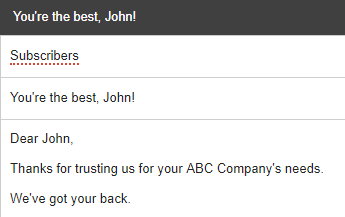
With just a little code, you can send a mass email that looks like a personal email.
Just don’t go overboard. Use the subscriber’s name once or twice (such as in the subject line and the greeting) and the company name once or twice (for B2B marketing).
Other than that, focus on the story you’re telling, the product you’re selling, or the incentive you’re providing.
8. Make Sure You are Delivering on Your Email Copy Promises
A great way to collect emails is to create a top bar on your website with Hello Bar. Encourage your existing website visitors to signup for your email list.
You’ll likely want to use a lead magnet or some incentive to convince people to signup. If you do that, though, you have to follow through.
![]()
If you add a Hello Bar like this to your website, you need to be prepared to send a coupon every month. Otherwise, you’ll break your promise and irritate your subscribers.
9. Get to Know Your Audience and Give Them What They Want
A single mom with two jobs and no savings in the bank wants something different from a married, retirement-age man with $2 million in investments.
That’s obvious, right? You have to know your audience if you want your email copywriting to resonate.
Use Hello Bar’s A/B testing to discover what your target audience wants from your email marketing campaign. Test different lead magnets, offers, and CTAs.
You can also use other data you’ve collected from your audience. Polls and surveys work extremely well, too.
10. Choose Your Words Carefully When Email Copywriting
Word choice matters.
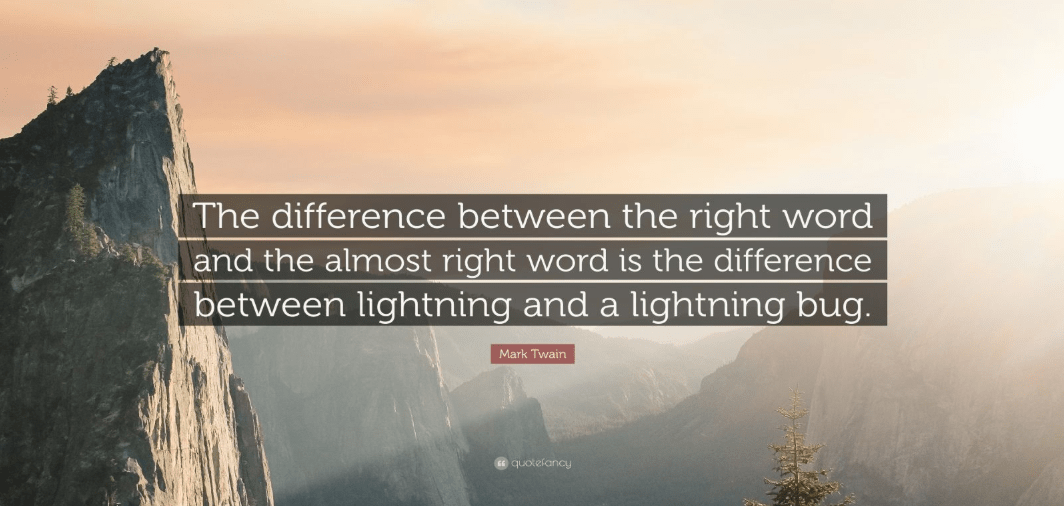
Let’s say you want to describe your product as fun to use. Instead of using the generic word “fun,” you could replace it with something more evocative:
- Amusing
- Delightful
- Action-packed
- Gut-busting
- Gratifying
- Comical
You get the idea. Use your thesaurus to find the word that sums up exactly what you want to say. That’s the essence of great email content.
11. Use Psychology in Your Email Copywriting Strategy
You don’t need letters after your name to use psychology in your emails. Knowing just a few principles can help you succeed.
Consider reciprocity, for instance. If you do something nice for others, they’ll want to do something nice for you.
Let’s say you sell an app or software. Offer a free trial with no credit card required.
Alternatively, let’s say you’re contacting existing trial users. Offer to extend the trial so the consumer can have more time with the program.
12. Let Readers Get to Know You
Some of my favorite marketing emails come from people sharing their experiences. Most importantly, they’re not afraid to share their fears, failures, and frustrations.
Brian Gardner is an excellent example. He’s best known for WordPress development, but he has his hands in tons of creative projects. When he sends out an email, it’s invariably raw and honest.
Consequently, when he recommends a premium WordPress plugin or announces a new product, we trust that he’s giving me the full story.
If you let your readers get to know you, they’ll become more trusting and loyal. It just takes time.
13. Tell a Short Story to Engage Your Readers
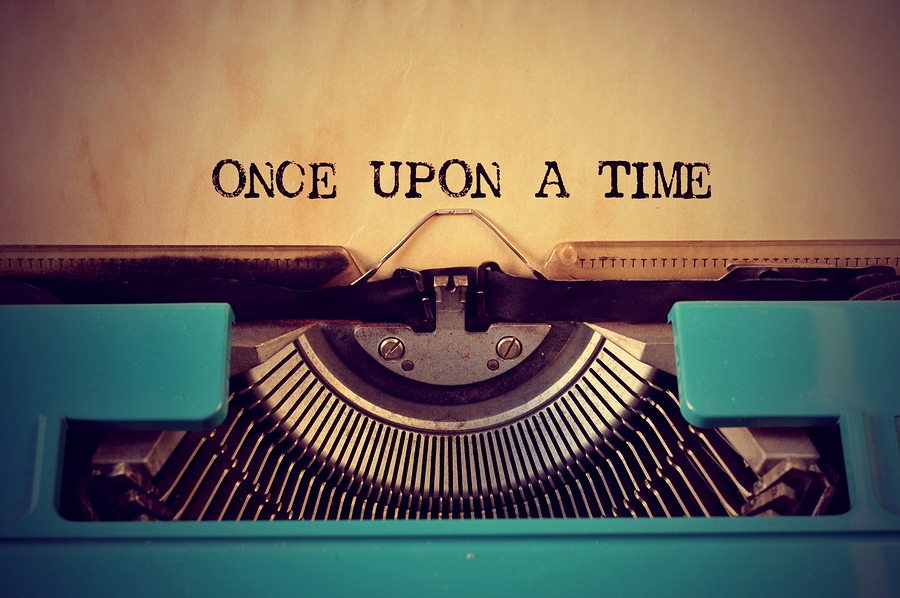
Stories engage the senses, trigger emotions, and help readers connect to you. Why not tell a story?
It could be a personal anecdote, a conversation with one of your team members, or a recent customer interaction. Alternatively, you could set up a fictional story to illustrate a point.
(Just make sure your readers know it’s fictional.)
Humans have used storytelling to communicate and relate to one another since the dawn of time. We love stories because we see ourselves in them, so we better understand where the other person is coming from.
14. A/B Test Your Email Copywriting to See What Works Best
Just as we recommend A/B testing your top bars and exit popups in Hello Bar, we also recommend A/B testing your emails. Send one email to half your subscribers and a second to the other half. Change just one variable.
If you conduct enough A/B tests, patterns will start to emerge. You’ll figure out what language, imagery, and CTAs your subscribers prefer so you can optimize future emails.
15. Reward Your Readers and Get to the Point Fast
Opening and reading an email doesn’t cost your subscribers anything.
Except that it does.
Time.
We can’t get back the time we spend reading emails, sitting in traffic, or washing the car. But we can get rewarded for it.
When a subscriber reads your email, try to end with a reward. Offer a discount. Provide a nugget of advice. Make the reader feel like they are better off for giving you his or her time.
16. Clarity is Extremely Important When Email Copywriting
We can’t stress this enough. If your reader doesn’t understand what you’re saying, your email becomes worthless.
Speak in clear, concise sentences. If you use industry jargon, explain it. If you make an offer, describe all the details.
You don’t have to be boring, but if you can find a simpler word than the one you’ve used, it’s best to reword it for clarity.
17. Focus Your Email Copy on Actionable Language
Speaking of words, always write in the active voice. In other words, use language that encourages your reader to take action.
Consider these two CTAs:
- We’d love to hear from you!
- Shoot us an email to let us know how we’re doing!
Which one is clearer and more action-oriented? The second one, right?
If you want your subscribers to do something, ask them. But be specific and use strong verbs to do it.
18. Be Lovable When Appropriate
That sounds a little touchy-feely, doesn’t it? Yet it works with some brands.
In the lifestyle industry, for instance, lovable language can work wonders. Spread love, light, and good vibes whenever you can.
If you’re not sure how to do this, scroll through Instagram. View some images and captions from your favorite brands to understand how to do this effectively.
For instance, your email might look something like this:
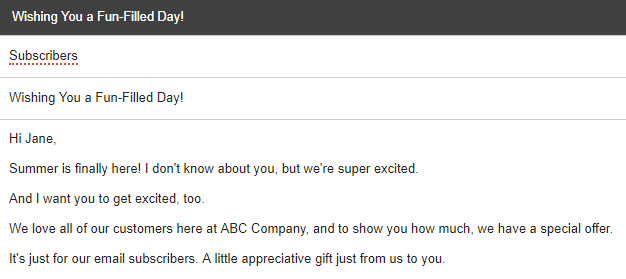
19. Create a Fantastic Call to Action to Optimize Your Email Copywriting Practices
Think of your call to action as your final masterpiece in any email. It’s where you invite your readers to interact with your brand.
The CTA should be consistent with the tone and content of the rest of the email. It should also be too tasty to pass up.
Focus on identifying what your readers expect from you and what they want most. Are they interested in coupons? Offer them $5 off their next purchase. Do they want information? Direct them to your latest blog post.
And use your CTA’s language to make the offer impossible to resist. Good CTAs for a discount code might look like this:
- Use Code “FREESHIPPING” at Checkout
- Use Code 15OFF to take 15 percent off your next purchase!
- Want Free Stuff? Use Code FREEBIE to get a free gift from us for your next purchase!
FAQs
Q1. What are some essential elements of a compelling email subject line?
Here are some essential elements that make an email subject line compelling:
- Clarity
- Relevance
- Brevity
- Curiosity
- Correctness
Q2. What role do visuals play in enhancing the effectiveness of email copy?
Here is how visuals boost the effectiveness of your email copy:
- They draw readers’ attention
- They explain complex ideas
- They break up large blocks of text
Q3. How can you use testimonials or social proof in your email copy to build trust?
Here’s how to incorporate social proof in your email copy:
- Include positive quotes from satisfied customers
- Share photos, videos, or stories created by your customers
- Showcase endorsements from influencers
Q4. How can you optimize email copy for mobile devices?
Here are some tips for optimizing email copywriting for mobile devices:
- Use a single-column layout
- Increase font size
- Keep subject lines short and concise
- Test your emails on multiple devices
Q5. How can you use A/B testing to improve your email copy?
Try different subject lines to see which one has a higher open rate. Additionally, test variations in the body copy to determine which version drives more conversions.
Conclusion
Email copywriting isn’t always a gift. Some people are naturally more adept at it, but you can learn it just like any other skill.
Maybe you’re not a fantastic writer. That’s okay. If you follow our 19 email copywriting tips, you’ll be better positioned to succeed.
Think like a consumer as well as a marketer. What would you want it to say if you were receiving an email from your company? More importantly, what would you want to take away from it?
Be as relatable as possible. Pretend you’re talking to a friend. When you discuss products, present the potential benefits to your target audience. Don’t drone on about features and specs.
Keep it brief — at least in the beginning. Older subscribers can withstand longer emails, but you don’t want to scare them off right away.
And don’t be afraid to get personal. Share anecdotes, stories, and details about your life. A behind-the-scenes look can work, too.
Shorten your paragraphs, choose words wisely, and consider the psychological principles behind your email copywriting. Use actionable language to boost your conversion rate and make your CTA as compelling as possible.
Try not to let all this information intimidate you, though. You’ll be fine as long as you focus on providing value.
Do you have any email copywriting tips to share with the class?



